Struggling with pans that burn food in one spot and leave it raw in another? Tired of cookware that warps or scratches easily? Fully clad cookware solves these common kitchen frustrations.
Fully clad cookware features multiple layers of metal (typically stainless steel and aluminum) bonded together, extending from the base up the sides, ensuring superior heat distribution, durability, and cooking performance.
Before fully clad cookware became widely available, I always chose stainless steel over non-stick aluminum pans. Stainless steel felt more durable, didn’t have chemical coatings I worried about, and held its shape better under heat. But even then, I knew quality mattered – basic 201 or 410 stainless steel can rust or deform, whereas 304 grade is the reliable choice for anything touching food.
Then, about a decade ago, technology improved, and fully clad tri-ply stainless steel hit the market. This was a game-changer. It bonds different metals together to get the best of each:
- Inner Layer: 304 Stainless Steel (like 18/8 or 18/10) – This is the surface your food touches. It’s food-safe, doesn’t rust easily, and won’t react with acidic ingredients.
- Core Layer: Aluminum – This metal is fantastic at heating up quickly and spreading that heat evenly. This core runs all the way up the sides, not just on the bottom.
- Outer Layer: 430 Stainless Steel (often) – This layer provides toughness and, crucially, it’s magnetic, so the cookware works perfectly on induction cooktops.
This construction makes a huge difference. Pots heat faster, cook food more evenly without hot spots, and work on any type of stove. I’ve personally used fully clad pans for over 12 years now. The difference in build quality, how they feel in hand, their durability, and how easy they are to clean compared to older styles is why I trust them completely. It’s also why I transitioned into selling both the raw tri-ply materials and the finished cookware – I genuinely believe in the product.
Especially in Western markets, I see huge demand. I recently worked on a project with a Swedish client focused almost entirely on tri-ply frying pans – that tells you something about their popularity. You should consider using it because it combines durability, efficient heating, and safety, making cooking easier and more reliable.
What is the healthiest type of cookware to use?
Worried that your cookware might be leaching harmful substances into your food? Searching for options that prioritize health and safety? Choosing the right material offers peace of mind.
High-quality stainless steel (especially the 18/8 or 18/10 used in fully clad cookware), glass, and 100% ceramic are generally considered among the healthiest cookware options due to their stability and non-reactivity.
When we talk about "healthy" cookware, we usually mean materials that don’t release unwanted chemicals or metals into your food, especially when heated or used with acidic ingredients. Let’s look closer:
Comparing Healthy Cookware Materials
| Material | Pros | Cons | Health Notes |
|---|---|---|---|
| Fully Clad Stainless Steel | Durable, non-reactive, even heating[^2], easy to clean, versatile | Can be heavy, more expensive, food can stick without proper technique | Inner 304 (18/8 or 18/10) layer is stable and non-leaching. Avoid low-grade stainless steel. |
| Glass | Completely non-reactive, won’t absorb odors/flavors, see-through | Can break easily, poor heat conductivity (can have hot spots), not for stovetop | Excellent for baking, storage, and microwave. No leaching concerns. |
| 100% Ceramic | Non-reactive, non-toxic (if pure), retains heat well | Can chip/crack, potential for uneven heating, quality varies greatly | Ensure it’s 100% ceramic, not just a coating. Check for lead/cadmium-free glazes. |
| Cast Iron (Seasoned) | Extremely durable, develops non-stick surface, adds iron to food | Heavy, requires seasoning, can react with acidic food, potential rust | Adds dietary iron (benefit for some). Proper seasoning creates a safe, inert layer. Avoid if rust occurs. |
| Non-Stick (Modern) | Convenient, easy food release | Coatings degrade, avoid high heat/metal utensils, potential concerns | Avoid older coatings (PFOA). Modern PTFE/ceramic coatings are generally safe if used correctly (not overheated/scratched). |
For me, fully clad stainless steel is a top choice for healthy cooking. The 304 stainless steel inner layer is specifically chosen for its stability and resistance to corrosion, meaning it won’t react with tomatoes, lemon juice, or wine. Unlike some non-stick coatings, you don’t have to worry about fumes at high heat or chemicals flaking off over time.
While glass and ceramic are excellent non-reactive options, they often lack the versatility and durability needed for everyday stovetop cooking. Cast iron is great, but the need for maintenance and potential reactivity with acidic foods make stainless steel simpler for general use.
What is the most hygienic cookware?
Concerned about bacteria lingering on your cookware surfaces? Want pans that are easy to clean thoroughly? Choosing a hygienic material helps ensure food safety in your kitchen.
Stainless steel, particularly the high-quality, non-porous type used in fully clad cookware, is generally considered the most hygienic option because it’s easy to clean, resists scratches, and doesn’t harbor bacteria.
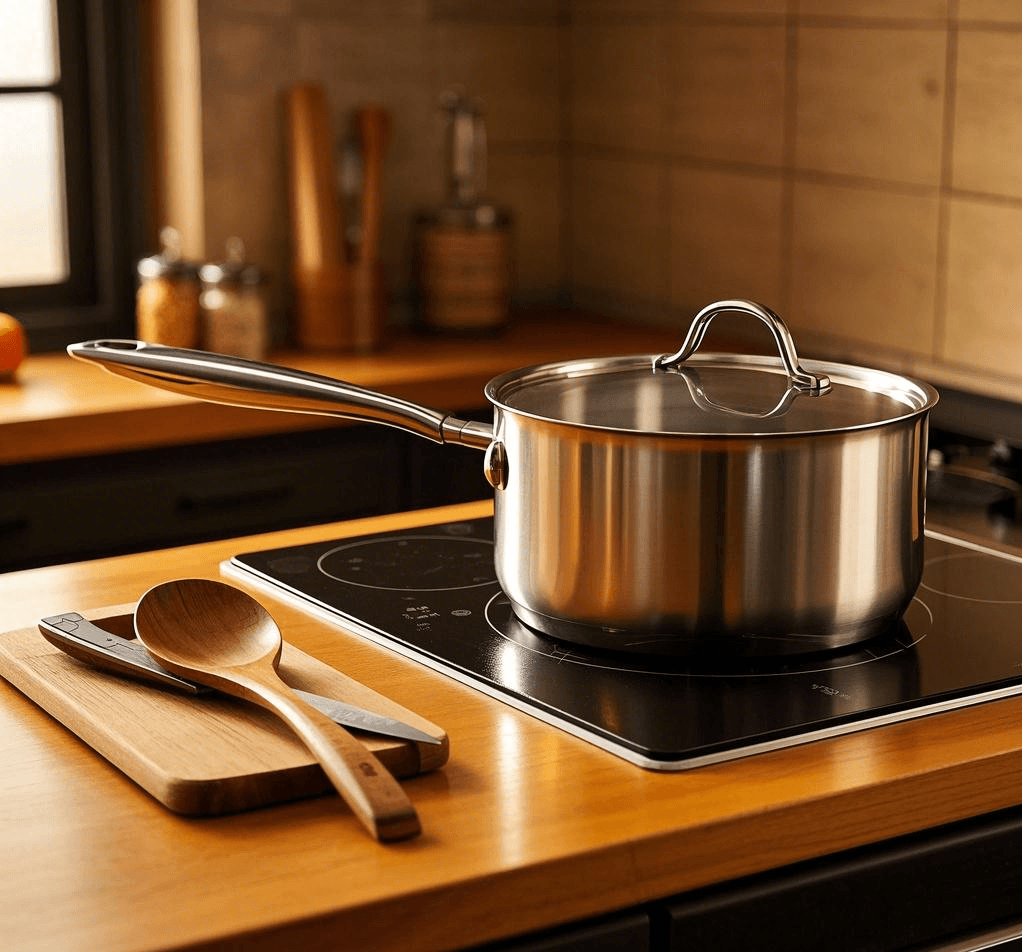
Hygiene in cookware relates to how easily it can be cleaned and how resistant its surface is to harboring bacteria or residual food particles. Here’s why stainless steel stands out:
Factors Contributing to Hygienic Cookware
- Non-Porous Surface: High-quality stainless steel, like the 304 grade used inside fully clad pans, has a very smooth, non-porous surface. This means there are no tiny holes or crevices where food particles or bacteria can hide. Materials like wood or poorly maintained, pitted cast iron can be porous and harder to sanitize completely.
- Ease of Cleaning: Stainless steel cleans up relatively easily with standard dish soap and water. Because it’s smooth, food residues tend not to cling stubbornly. Many fully clad stainless steel pans are also dishwasher safe (though always check manufacturer instructions, especially regarding handles), allowing for high-temperature sanitization.
- Durability and Scratch Resistance: While not completely scratch-proof, stainless steel is highly resistant to scratches, especially compared to non-stick coatings or softer metals like aluminum. Scratches can create rough areas where bacteria might accumulate, making smooth, durable surfaces more hygienic. Avoid using harsh abrasives like steel wool, which can create scratches.
- Resistance to Corrosion and Staining: Stainless steel resists rust and staining, which helps maintain a clean, smooth surface over time. Corrosion or pitting can create areas that are difficult to clean properly.
- Stability: Stainless steel doesn’t break down or degrade easily, ensuring the surface remains intact and hygienic throughout its lifespan.
Compared to other materials, stainless steel often provides the best combination of these hygienic properties. Glass is also very hygienic (non-porous, easy to clean) but less practical for stovetop use. Ceramic is good if intact, but chips or cracks can compromise hygiene. Well-seasoned cast iron can be hygienic, but requires specific cleaning methods to avoid stripping the seasoning or causing rust. Non-stick surfaces are hygienic when new, but scratches or degradation can create cleaning challenges and potential hiding spots for residues.
What cookware is 100% non toxic?
Searching for cookware that guarantees no harmful chemicals will leach into your meals? Worried about toxins from coatings or materials? Identifying truly non-toxic options provides cooking confidence.
Cookware made from high-quality stainless steel (like 304 grade in clad), glass, and 100% pure ceramic are widely considered non-toxic because they are inert and don’t release harmful substances during cooking.
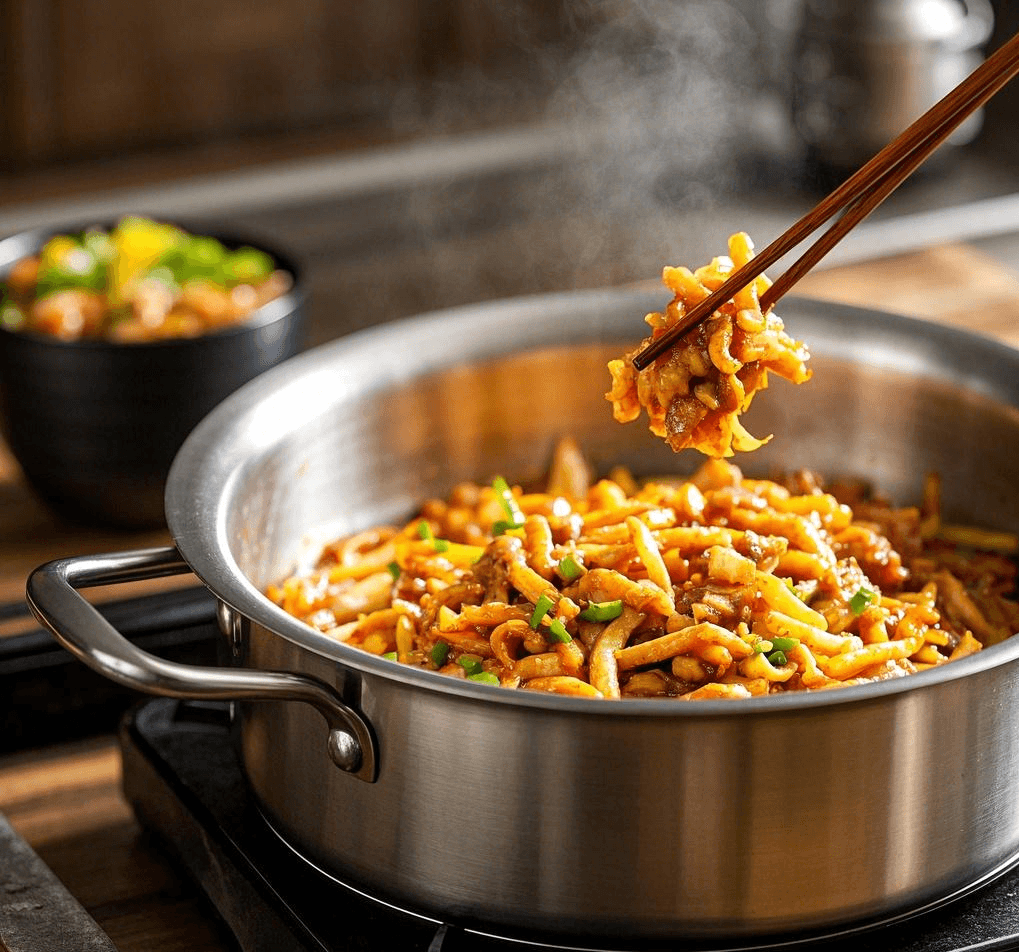
The term "non-toxic" in cookware means the material itself doesn’t contain harmful substances and won’t break down or react with food to create harmful byproducts under normal cooking conditions.
Evaluating Cookware for Toxicity
- Stainless Steel (High-Quality): The 304 stainless steel (often marked 18/8 or 18/10) used as the cooking surface in fully clad cookware is valued for being stable and non-reactive. It doesn’t contain PFOA, PFAS, lead, or cadmium. It’s designed specifically not to leach significant amounts of metals like nickel or chromium into food under normal use. This makes it a very reliable non-toxic choice for most people. Avoid cheap, low-grade stainless steel (like 201 series) which may be less stable.
- Glass: Glass cookware (like Pyrex or similar borosilicate glass) is inherently non-toxic. It’s made from natural materials (sand, soda ash, limestone) and is completely inert, meaning it won’t react with food or leach anything harmful. Its main limitation is thermal shock resistance and stovetop incompatibility for most types.
- 100% Ceramic: Cookware made entirely from ceramic (fired clay) is non-toxic if it’s made purely from clay and water and uses lead-free and cadmium-free glazes. It’s inert and won’t leach chemicals. Be cautious of "ceramic-coated" cookware, which is different – the coating can wear down. Always verify the purity and glaze safety of 100% ceramic pieces.
- Seasoned Cast Iron: When properly seasoned, cast iron develops a polymerized oil layer that acts as a barrier between the food and the iron. This seasoned layer is considered non-toxic. Unseasoned or poorly maintained cast iron might leach excessive iron (not toxic in small amounts but potentially undesirable) or react with acidic foods.
- Non-Stick Coatings (Modern): Concerns historically focused on PFOA used in manufacturing older Teflon. Modern PTFE (Teflon) is PFOA-free and considered non-toxic and inert below high temperatures (around 500°F / 260°C). If overheated, PTFE can release fumes. Scratched or damaged coatings should also be avoided. Ceramic non-stick coatings are generally considered non-toxic but may lose effectiveness faster than PTFE.
For worry-free, non-toxic cooking across a range of methods, high-quality fully clad stainless steel remains one of the best and most versatile choices available.
What is the number 1 cookware?
Overwhelmed by choices and just want to know what the single best cookware is? Trying to find that one perfect pan or set? The reality is slightly more complex.
There isn’t one single "number 1" cookware for everyone, as the best choice depends on cooking style and priorities. However, fully clad stainless steel is often ranked top for its excellent balance of performance, durability, versatility, and safety.
 pan](https://triplycircletitanium.com/wp-content/uploads/2024/07/c910475b-b15b-473b-b86c-5e513f8140a7.jpg_1920xaf.jpeg)
Different cookware materials excel at different things, so the "best" really depends on what you value most in the kitchen. Let’s see why fully clad often gets top marks:
Why Fully Clad Ranks Highly
- Performance (Heat Distribution): The core layer (usually aluminum) heats quickly and spreads heat evenly across the bottom and up the sides. Basic stainless steel or aluminum lack this evenness.
- Durability: The multi-layer construction makes fully clad cookware extremely resistant to warping, denting, and scratching compared to single-layer or coated pans. It’s built to last for many years, even decades, making it a good long-term investment.
- Versatility: Fully clad cookware works exceptionally well for a wide range of cooking methods – sautéing, frying, searing, boiling, simmering, making sauces. Most pieces are oven-safe (check handle limits) and compatible with all cooktops, including induction. Cast iron isn’t ideal for acidic sauces, and non-stick isn’t suited for very high-heat searing.
- Maintenance: Compared to cast iron’s seasoning needs or the careful handling required for non-stick coatings, stainless steel is relatively low-maintenance. It cleans easily, doesn’t require seasoning, and often goes in the dishwasher.
- Safety/Health: As discussed, the high-quality stainless steel cooking surface is non-reactive and doesn’t leach harmful substances, making it a safe and healthy choice.
Who Might Choose Differently?
- Budget-Conscious: Basic stainless steel or aluminum is cheaper.
- Non-Stick Convenience: Someone prioritizing effortless food release might prefer quality non-stick for specific tasks (like eggs).
- High-Heat Searing Fans: Cast iron enthusiasts love its heat retention for crust development.
- Weight Sensitivity: Cast iron is very heavy; some find fully clad heavy too, preferring lighter aluminum.
While other materials have their strengths, fully clad stainless steel offers the most comprehensive package for the average serious home cook or even professional kitchen. It handles almost any task well, lasts a long time, and is safe and relatively easy to care for. That’s why, in my experience, it’s often considered the top all-around choice.
What cookware is 100% safe?
Feeling anxious about potential hidden dangers in your kitchenware? Want absolute certainty that your pots and pans pose no health risks? Defining "100% safe" helps clarify the best options.
High-quality stainless steel (like the 304-grade inner layer of fully clad), glass, and 100% pure ceramic cookware are generally considered 100% safe for cooking, being non-toxic, non-reactive, and stable under normal heat conditions.
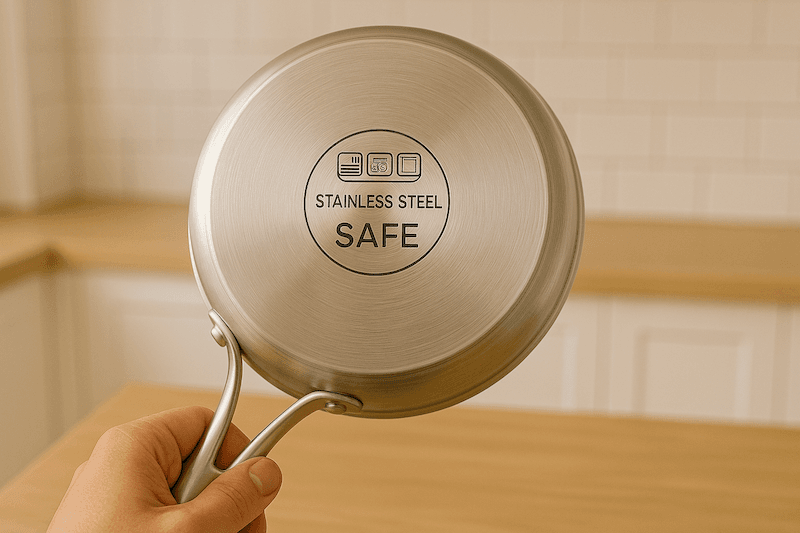
When we aim for "100% safe" cookware, we’re looking for materials that meet several criteria under intended use:
Defining Safety in Cookware
- Non-Toxic: The material itself doesn’t contain harmful substances (like lead, cadmium, PFOA/PFAS) that could leach into food.
- Non-Reactive: The material doesn’t chemically react with ingredients, especially acidic ones (like tomatoes or vinegar), ensuring food taste isn’t altered and no unwanted compounds are formed.
- Stable Under Heat: The material doesn’t break down, release fumes, or degrade in a way that compromises safety when exposed to typical cooking temperatures.
- Durable Surface: The cooking surface resists damage like chipping or scratching, which could potentially expose underlying materials or create areas hard to clean.
Materials Meeting These Criteria:
- Fully Clad Stainless Steel: The inner 304 (18/8 or 18/10) stainless steel layer is specifically chosen for its inertness and stability. It meets all the criteria above, making it extremely safe for virtually all cooking tasks. The key is quality – avoid cheap, unspecified stainless steel.
- Glass: Inherently non-toxic and non-reactive. Its main safety concern is physical (breakage from impact or thermal shock), not chemical. Excellent for baking and storage.
- 100% Ceramic: If certified free of lead/cadmium glazes, pure ceramic is very safe chemically. Like glass, the primary concern is physical durability (chipping/cracking).
- Seasoned Cast Iron: Considered safe when properly seasoned and maintained. The seasoning layer is inert. Risks arise if the seasoning is damaged or rust occurs, potentially leading to iron leaching or reactivity.
- Titanium: Pure titanium cookware is extremely safe, non-toxic, and non-reactive, but very expensive and less common. Titanium coatings on other materials are different.
Materials with Caveats: - Non-Stick (PTFE/Ceramic): Generally safe if used correctly (avoiding high heat, metal utensils, damaged surfaces). Overheating PTFE can release fumes; degraded coatings might expose underlying aluminum or simply fail.
- Aluminum: Pure aluminum can react with acidic foods. Anodized aluminum is safer as the process creates a harder, non-reactive layer, but this layer can still be damaged. Aluminum cores in clad cookware are safe as they are sealed within stainless steel layers.
- Copper: Excellent heat conductor but reactive. Usually lined with stainless steel or tin for safety. Unlined copper requires careful use and maintenance.
For versatile, everyday cooking demanding high safety standards, high-quality fully clad stainless steel remains a top recommendation due to its proven stability, non-reactivity, and durability.
Conclusion
Fully clad cookware offers superior heat control, lasting durability, and excellent safety. Using it means more consistent cooking results, easier maintenance, and peace of mind in the kitchen.



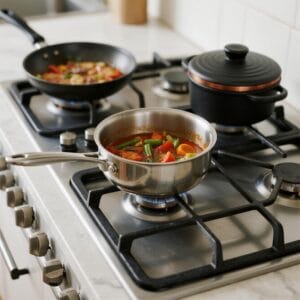
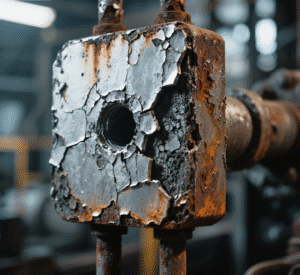
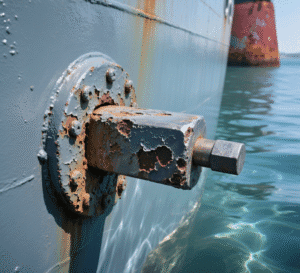

One Response